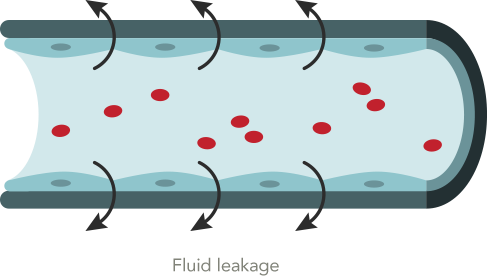
What causes HAE?
People with HAE are missing or have low levels of a protein called C1 esterase inhibitor (C1-INH); in some cases, the C1-INH levels are sufficient but the protein does not function properly. The defect with C1-INH lies within a person's genetic code, which is why HAE runs in families.
Without adequate amounts of working C1-INH, blood vessels and capillaries in the body can become leaky and allow fluid to build up in the surrounding areas. This leakage and fluid buildup leads to the swelling and pain experienced during an attack.
The 3 types of HAE
HAE is classified into 3 types based on what problem the genetic defect causes. A person can have low levels of C1-INH in the body (type I HAE), poorly functioning C1-INH (type II HAE), or HAE with normal functioning C1-INH (formerly known as type III HAE). The last type is extremely rare and not well understood.
Low level
of C1-INH
C1-INH functions
normally
Occurs equally in
men and women
The most common:
~85% of people
with HAE
Normal level
of C1-INH
C1-INH does not
function normally
Occurs equally in
men and women
~15% of people
with HAE
functioning C1-INH (formerly known as type III)
Normal level
of C1-INH
C1-INH functions
normally
More common in
women than men
Extremely rare
Check your symptoms
The swelling of HAE can easily be mistaken for allergic reactions. See what your symptoms point to.
Go to Symptom CheckerGive your doctor the right information
Answer a few questions to help get the correct diagnosis and treatment.
Complete the DoctorDiscussion Guide